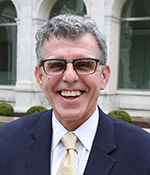August 2016

David Gozal, MD, MBA
Ten years ago, the ATS Foundation was founded to help support the work of early career researchers. Five years later, the ATS began providing International Conference scholarships to early career attendees, from medical students to fellows and trainees. These are small, yet significant ways we are helping support the next generation of lung physician-scientists.
Of even greater importance is our advocacy for increased funding for the National Institutes of Health, specifically at least $34.5 billion in funding for 2017. Current NIH funding has been stagnant for a decade. Taking into account inflation, NIH funding has decreased over the past 10 years. Comparatively, the requested annual budget of the NIH is equivalent to approximately that of a single pharmaceutical company.
Stagnant NIH funding affects us all at the local level. Approximately 85 percent of the agency’s budget is invested in research universities, medical schools, hospitals, and health care businesses. Despite novel technologies, our potential impact is not growing enough.
Instead, new investigators are being squeezed out of research funding. As a consequence, we have a dwindling pool of pulmonary scientists and are ill-equipped to attract prospective candidates to careers in scientific academia.
In the business world, a venture with a prospective likelihood of 10-15 percent success would never attract investors, not even the greatest risk seekers. Yet, those are the funding success rates nowadays, and we are asking the pipeline of prospective academicians to invest their professional lives into such “deals.”
In times of funding scarcity, like today, the ATS has stepped in to create an environment which enables early career development. Mentorship and leadership programs are key, and while we have already implemented quite a few such programs, we also need to devise different ways to evaluate their effectiveness.
Success will take more than just extra research dollars, additional grant support, and iterative programming. To truly help early career professionals thrive, the NIH and other biomedical research agencies will need to make substantially larger investments.
The hunt for treatments and cures for lung disease is ongoing. For one of our biggest killers, COPD, the quest will take time and challenge us. The disease is now the third- leading cause of death in the U.S. but has only a fraction of the research funding invested toward the other leading causes of death (cancer, heart disease, and stroke, respectively). Direct medical costs associated with COPD are estimated at $29 billion each year. While defeating the disease may not come in our lifetime, it may be achieved by the future generation. I believe this next generation’s vibrant and entrepreneurial spirit can help take us there—if we only fully invest in them!

